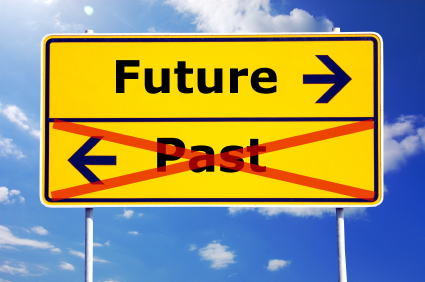 As leaders and managers we are often in the position of instigating or shepherding change efforts. Whether you are leading a process improvement team, implementing a new policy or system, or even driving cultural changes, you are, in effect, a change agent. You are introducing a new way of doing things, which means adopting new behaviors and letting go of old habits and patterns.
As leaders and managers we are often in the position of instigating or shepherding change efforts. Whether you are leading a process improvement team, implementing a new policy or system, or even driving cultural changes, you are, in effect, a change agent. You are introducing a new way of doing things, which means adopting new behaviors and letting go of old habits and patterns.
As leaders we have likely cultivated our own change hardiness, which may be one of the reasons we have risen through the ranks. We have learned ways to adapt to change and we are more or less comfortable with uncertainty. But as surely as the wind blows, as we work to be agents of change, we will be confronted with those steadfast change resistors who seem to make it their mission to dig in their heels and stay put.
Resistance can take many forms. Sometimes, people will say yes to the change in public, but will not lift a finger to participate in any aspect of the change. Other times, people will be vocal about their resistance, and they will tell you clearly about the 300 reasons this won’t work. Others still will be quiet and stealth- not raising any verbal resistance, but simply not showing up and failing to participate in change efforts.
Though all these forms of resistance can cause frustration and delays, they are natural expressions, and our most powerful response to resistance is to get curious. When we look more closely and gain perspective about what might be happening under the surface, we are in a much better position to negotiate involvement and make a difference.
5 Questions Change Agents Use to Move People Forward
When you are confronted by resistance to change, use these five questions to deepen your understanding of the situation and make a plan for moving forward.
1) First and foremost, when confronted with resistance to change, ask, “What underlying needs are being met by leaving things just the way they are?”
We are driven by our needs and we have many! For example, we have a need to be safe, and a need to be comfortable, and even a need to feel and appear competent. Add these together, and it becomes clear that change can threaten our stability and throw us off balance. If I am being asked to use a new software program, you can bet that I may be worried about appearing incompetent, and about the time and effort it will take me to restore my functionality. This can add up to discomfort, and it can manifest as resistance.
2) Another useful question for understanding the dynamics behind resistance, is, “what are the costs and benefits associated with making the change?”
More often than not, leaders have thought a lot about the costs and benefits of change from a business perspective, but the personal view can be very different. If you take a walk in the shoes of those who are being asked to implement the change, you may find that the benefits are not as clear. It is imperative that leaders deepen their understanding of those perceived costs and then do a thorough job of discussing (not just talking about) benefits so that individuals will feel the desire to change. It is only when we truly see the benefit of a change- for ourselves- that we develop a desire to change.
3) A third question that may come in handy is, “what knowledge, skills and tools are needed in order to make the transition?”
When we are changing behaviors, we often need to learn and practice new things. If I am being asked to start running staff meetings, and I resist, it may be because I don’t know what is expected of me as the meeting leader (which is knowledge), or that I need help learning to draft an agenda (which is a skill), or that I need a meeting template to follow (which is a tool). When you are confronted by resistance, do an analysis of the knowledge, skills and tools needed for success. Providing these supports can increase the confidence of your direct reports and reduce resistance.
4) The fourth question is, “how are we measuring our progress toward our goal?”
If we don’t measure our progress, then we are unlikely to see progress. Resistance to change may be an expression of frustration or simply giving up because the road seems too long and vague. Further, if you already have a nebulous goal such as “improving our culture,” or, “being a better manager,” then you have to get creative about finding ways to measure progress.
I once had a client who wanted to become a better listener. Because this was so hard to measure, she decided to purchase a silk thread and a box of beads. Each time she felt that she had invoked her good listening habits (like listening without interrupting, or opening her mind to a new idea) she strung a bead onto her thread. In no time, she had a beautiful necklace that she wore as a testament to her growth as a listener.
5) The final question I will recommend is this: “have we broken down this change into manageable steps and achievable milestones so that we can celebrate along the way?”
It is very important to mark our progress toward goals. When I encounter resistance to change, I work hard to involve the resisting parties in the development of milestones, measurements, and celebration activities. The milestones must be achievable and the steps to get there must be manageable. If the bar is set too high, or the distance to travel too far, no one will want to engage in the effort required for true change.
Resistance can be frustrating for leaders. It can represent wasted time, wasted effort and set-backs. But resistance is a natural expression of real feelings and fears. If we remain empathic and we approach resistance with genuine curiosity and good questions in mind, we can work together to build strategies that will make change much more palatable and smooth.
 Written by Claire Laughlin, Consultant & Trainer, Leadership 4 Design- As an independent consultant and trainer with 20 years of diverse experience, Claire Laughlin brings a passion for improving relationships, experience in management, and a relentless dedication to transformation to all of her work. She is fully committed to working with individuals, teams, and organizations as they learn and cultivate the habits and practices that make their organizational dynamics healthy and highly productive. Claire's experience spans Leadership to Communication Essentials to Project Management & Customer Service and has designed and taught over one hundred courses at over 60 organizations and seven different colleges and universities. In addition to her consultancy work, Claire directs Cabrillo College's Corporate Training Program.
Written by Claire Laughlin, Consultant & Trainer, Leadership 4 Design- As an independent consultant and trainer with 20 years of diverse experience, Claire Laughlin brings a passion for improving relationships, experience in management, and a relentless dedication to transformation to all of her work. She is fully committed to working with individuals, teams, and organizations as they learn and cultivate the habits and practices that make their organizational dynamics healthy and highly productive. Claire's experience spans Leadership to Communication Essentials to Project Management & Customer Service and has designed and taught over one hundred courses at over 60 organizations and seven different colleges and universities. In addition to her consultancy work, Claire directs Cabrillo College's Corporate Training Program.
Do you have a question for Claire? Please visit our Workplace Communication Skills Community, she will be happy to help: Ask an Expert